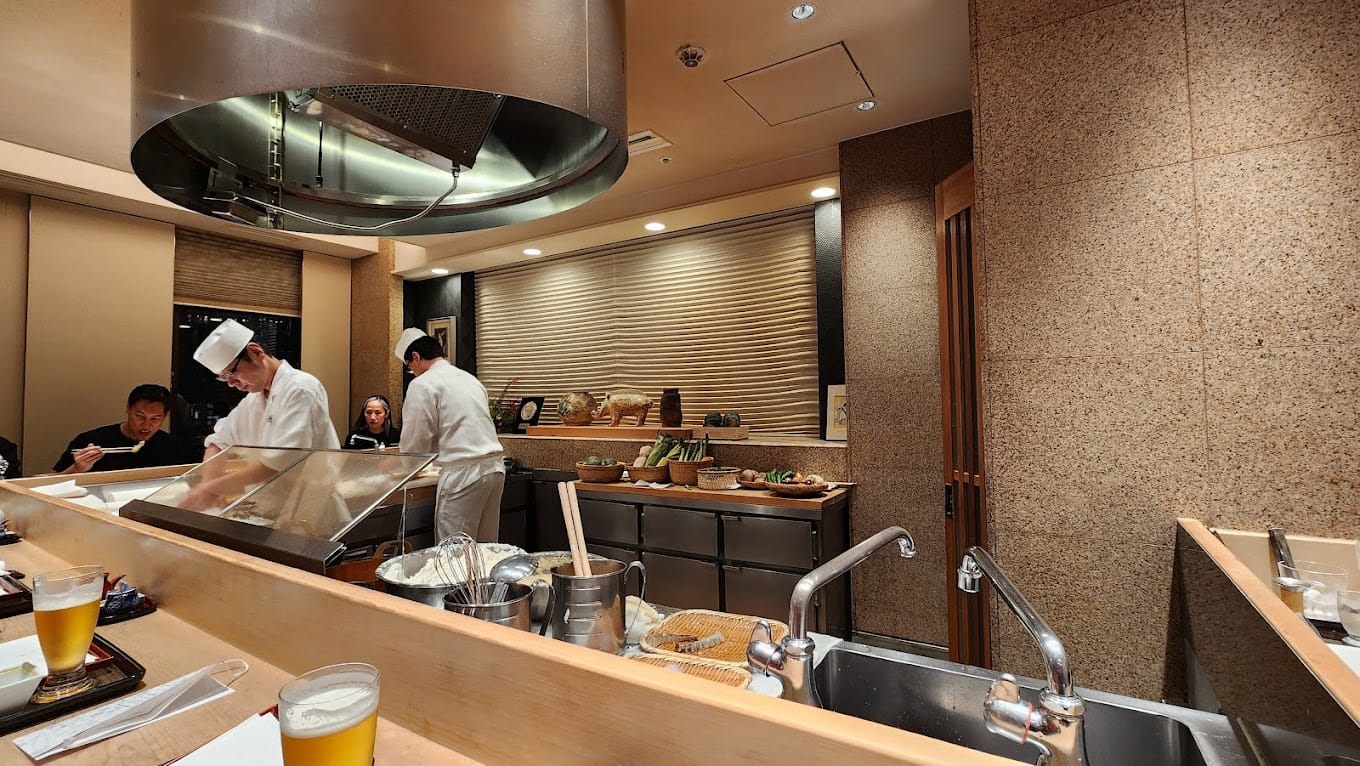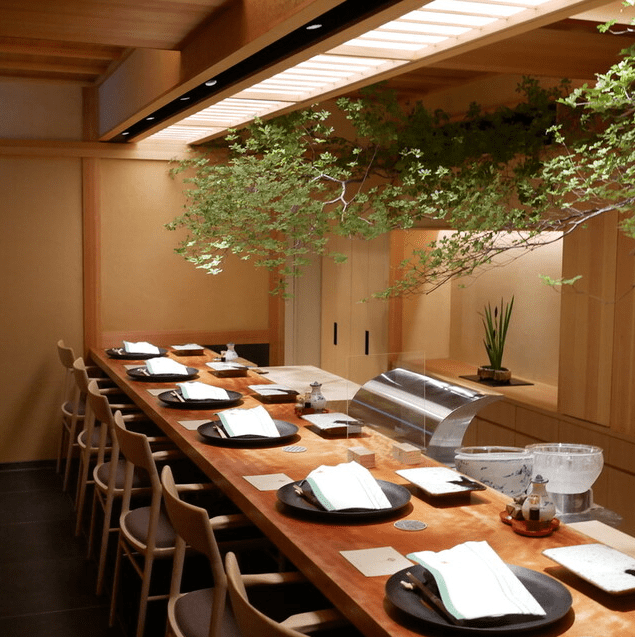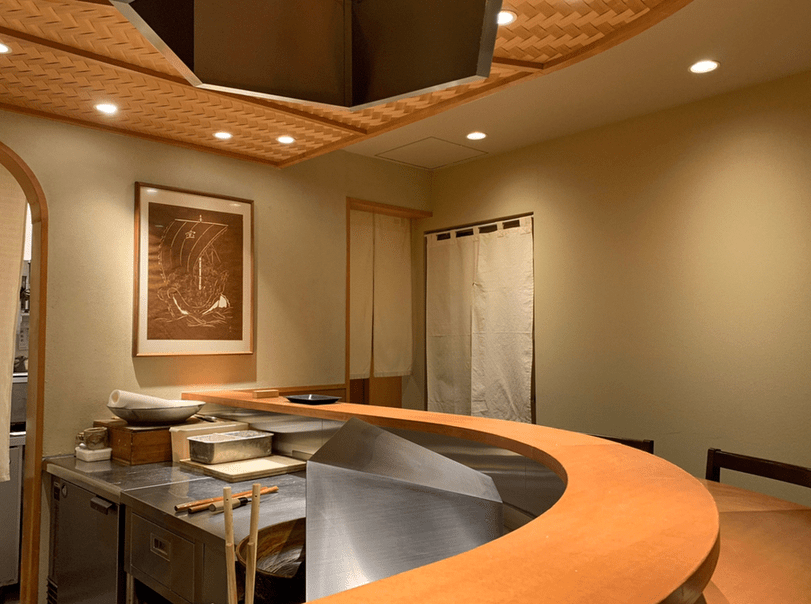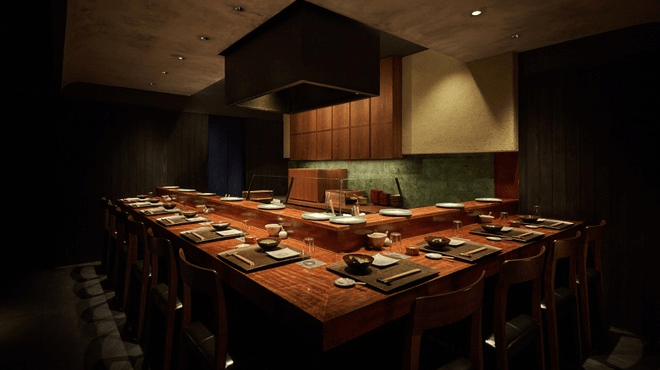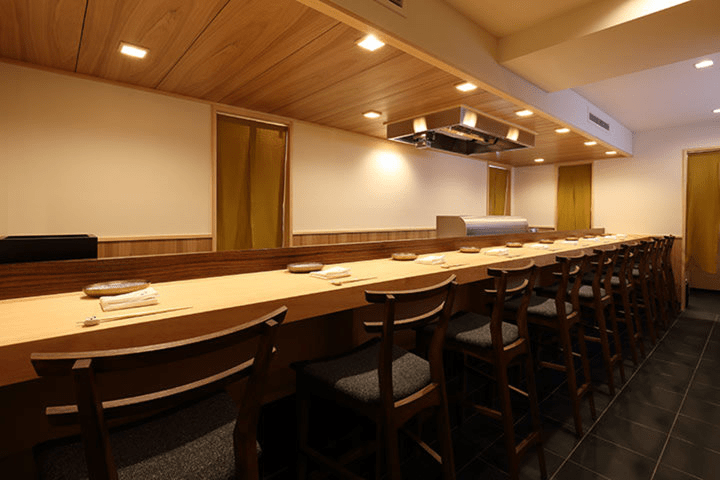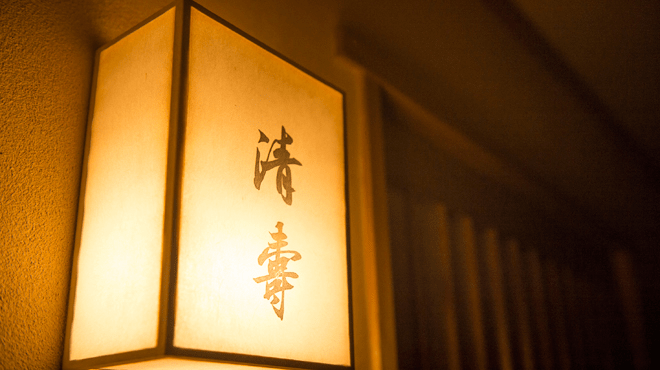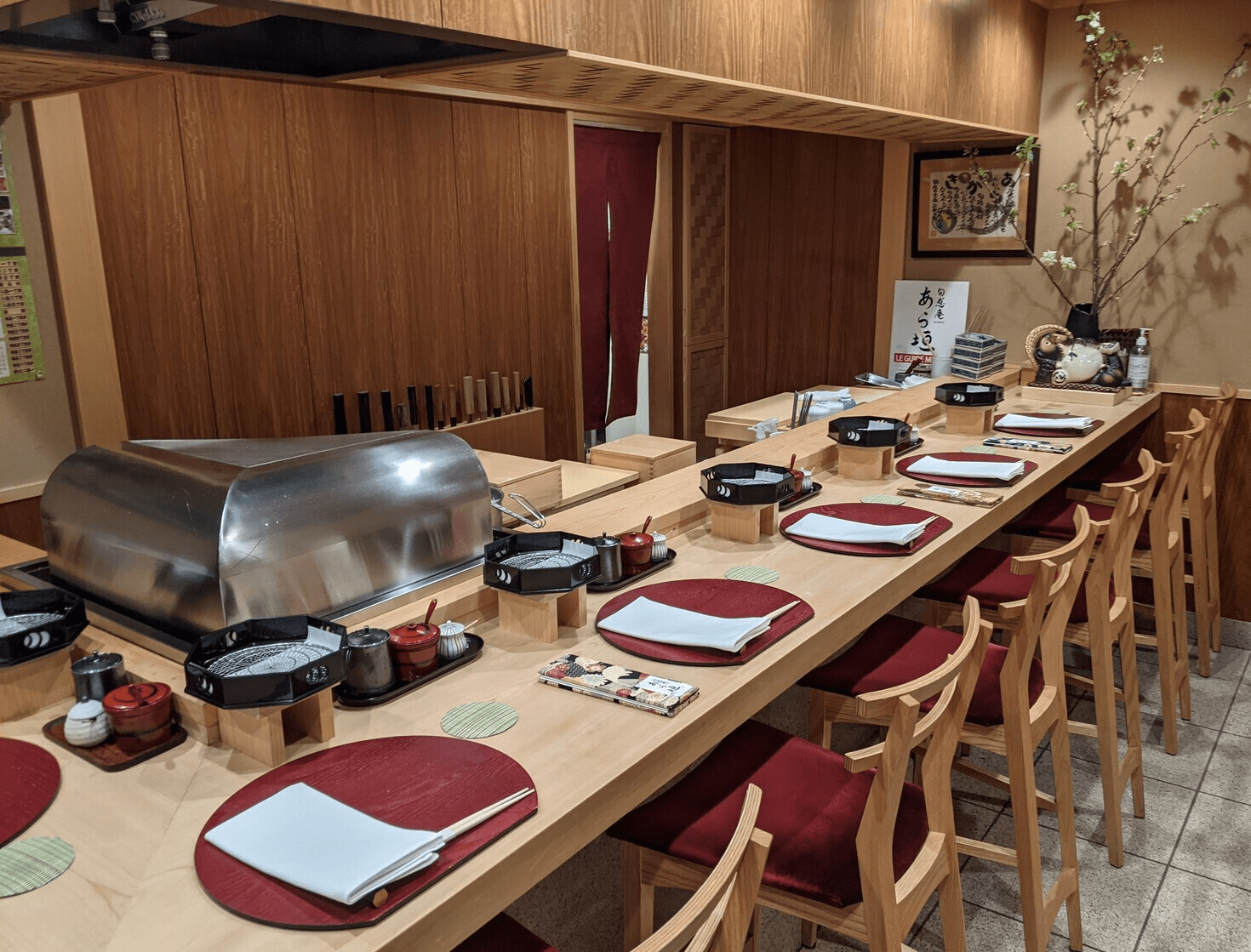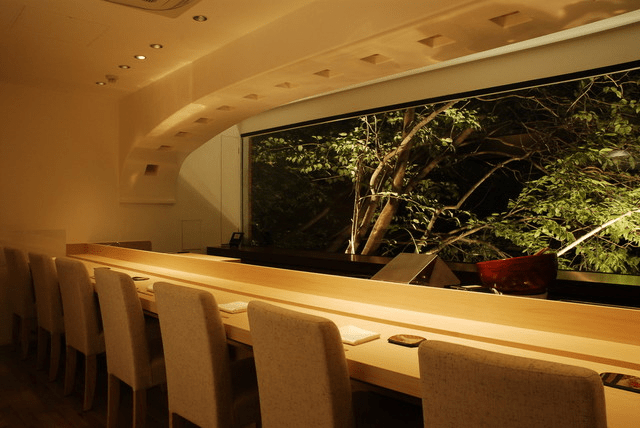Best Michelin-Starred Tempura Restaurants in Tokyo 2026: Kondo, Fukamachi & Other Local's Favorite
This time I wrote an article about Tokyo, a city I was born and raised. And I updated this article in January 2026 to incorporate my findings from this research, along with the latest information for 2026.
Another reason for updating the article is the growing interest in tours that allow visitors to safely and deeply experience Tokyo. Because Tokyo is a city that continues to develop at a dizzying pace and in complex ways, tourists visiting for the first time find it extremely difficult to discover the truly excellent spots beloved by locals.
This is why food tours led by knowledgeable local guides who know Tokyo inside and out have been gaining popularity, as they take visitors through Tokyo's maze of establishments.
In fact, Magical Trip's tour, which ranked #1 among all tours on Tripadvisor, has been receiving numerous applications.

For those interested in traditional Japanese cuisine especially Sushi, join the "Finest Quality Sushi & Tempura Dining Experience in Ginza," where a knowledgeable local guide will take you to their highly recommended Japanese restaurants. While enjoying sushi, tempura, and sake, your local guide will teach you proper dining etiquette and the best ways to savor each dish.
And if you want to make the most of Tokyo's nightlife, you absolutely must join the "Tokyo Bar Hopping Night Tour in Shinjuku," which is rated #1 on Tripadvisor. You can safely explore Shinjuku's historic retro drinking districts and Kabukicho, the largest entertainment district in Asia, with an expert guide who knows Shinjuku thoroughly.
We hope you'll have a wonderful time experiencing everything Tokyo has to offer by joining a Magical Trip tour!
Introduction
Tempura, a traditional Japanese cuisine inherited from the Edo period, has now reached the level of art. In Tokyo, there are many Michelin-starred restaurants recognized worldwide.
However, for foreign tourists, making reservations at high-end tempura restaurants may seem challenging due to language barriers and unique customs. Many establishments also cost over 20,000 yen per person, which might feel expensive for casual tourism budgets.
As a Tokyo-born and raised food enthusiast, I want more people to know the charm of supreme tempura, where the chef's skill and dedication to ingredients intertwine.
In this article, I'll introduce famous Tokyo restaurants that foreign visitors can comfortably visit, along with reservation methods and price ranges. Enjoy the essence of Japanese food culture beyond the language barrier!
Table of Contents
・What's the Difference Between High-End and Casual Tempura?
・Reservations Are Necessary for Michelin Tempura Restaurants
・Top 7 Recommended Michelin Guide Tempura Restaurants in Tokyo
・Frequently Asked Questions
What's the Difference Between High-End and Casual Tempura?
High-end tempura and casual tempura might seem like the same dish at first glance, but the differences are actually quite stark. From my own experience of tasting both types of tempura many times, let me explain these differences in detail.
1. Ingredients Used

In the world of high-end tempura, there's no compromise when it comes to ingredient selection. At the high-end restaurants I've visited, they use seafood boasting the best freshness of the day and vegetables at the peak of their season. What particularly stands out in my memory is the rare matsutake mushroom tempura served at one restaurant. Its aroma and flavor were truly the epitome of autumn's taste.
On the other hand, casual tempura uses more familiar ingredients. At my local tempura shop, chicken tempura and vegetable tempura with their unchanging deliciousness are always popular. While they may not have the luxurious feel of high-end restaurants, their charm lies in being able to enjoy them casually on a daily basis.
2. Cooking Technique
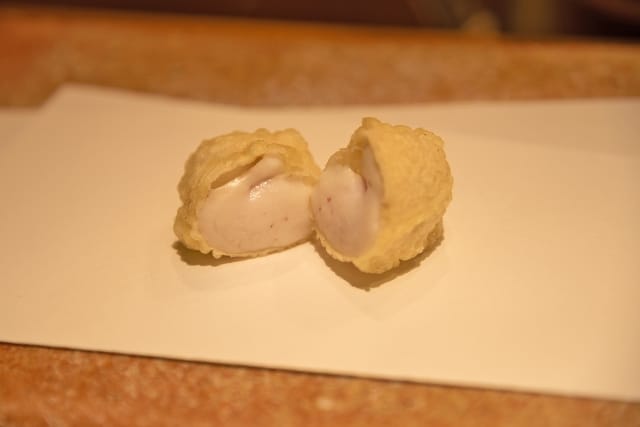
The cooking technique for high-end tempura has reached the level of art. The craftsmanship I witnessed right before my eyes was breathtaking. The batter is surprisingly thin, like a delicate veil covering the ingredients. The oil temperature control is also exquisite, resulting in shrimp tempura with a perfect texture - crispy on the outside and juicy on the inside.
Even with casual tempura, of course, skill is needed to fry deliciously. However, it doesn't have the same level of delicacy as high-end restaurants. My favorite tendon (tempura rice bowl) shop, for instance, is characterized by a thicker batter that emphasizes a crispy texture. This, in its own way, pairs excellently with the tempura sauce.
3. Serving Style

Dining at a high-end tempura restaurant is like watching a performance. At one restaurant I visited, I sat at the counter, closely observing the chef's skills while each dish was carefully explained as it was served. It was an elaborate course meal that made me feel the changing of seasons.
In contrast, casual tempura allows for a more everyday enjoyment. At the tempura set meal shop I often go to, freshly fried tempura is served all at once. The charm lies in being able to eat casually while chatting with friends.
4. Price Range
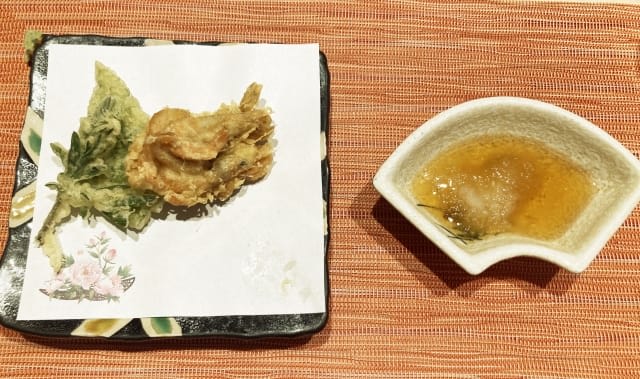
The price range for high-end tempura is indeed on the higher side. At a famous restaurant in Ginza I visited before, the dinner course exceeded 30,000 yen per person. However, it's true that I got a special experience worth that price. The rare ingredients, the chef's skills, and dining in a sophisticated space are worth the luxury for special occasions.
On the other hand, the charm of casual tempura lies in its price range that allows for everyday enjoyment. At my favorite tendon shop, you can eat a hearty tempura rice bowl for about 1,000 yen. It's great to be able to casually enjoy the deliciousness of tempura with good cost-performance.
5. Atmosphere and Service
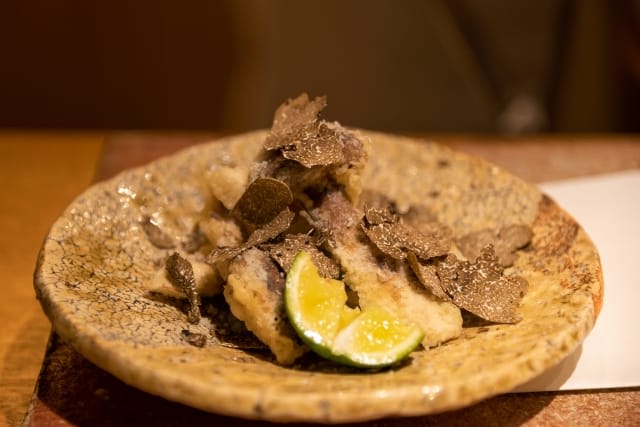
The atmosphere at high-end tempura restaurants is filled with a special, out-of-the-ordinary feeling. At a restaurant I visited in Roppongi, I was able to enjoy my meal in tranquility. The service was extremely attentive, and I was particularly impressed by the detailed explanation given for each tempura piece.
Casual tempura restaurants are characterized by a more relaxed and laid-back atmosphere. The downtown tempura shop I often go to has a lively atmosphere with conversations flying between regular customers and the owner. The friendly service is also part of its charm, and I love being able to casually ask for "seconds."
While there are these differences between the two, both embody the excellence of Japanese food culture. Why not try experiencing a special occasion at a high-end restaurant and enjoy daily pleasures at casual shops?
Reservations Are Necessary for Michelin Tempura Restaurants

When visiting Michelin-listed tempura restaurants in Tokyo, it's no exaggeration to say that reservations are essential. I myself have experienced being turned away when I visited without a reservation. Especially at popular restaurants, it's almost impossible to dine without a reservation.
Reservations become even harder to get on weekends and during tourist seasons. From my experience, it's safe to make a reservation one month in advance. Some famous restaurants even start taking reservations two months in advance, and in such cases, they can get fully booked on the day reservations open.
However, the language barrier can be a challenge. Many high-end tempura restaurants only accept reservations in Japanese. I realized how difficult this can be when I saw my foreign friend struggling to make a reservation. While there are restaurants that can handle English, they are still a minority.
Therefore, if making a reservation in Japanese is difficult, I recommend using a food tour service. I've used a food tour service myself when guiding foreign friends, and it was very convenient as they handled everything from reservations to interpretation. Using a hotel concierge service is also a good method.
When making a reservation, it's important to inform them in advance if you have any dietary restrictions or allergies. High-end restaurants are usually very accommodating to such requests.
Must-Try! 3 Restaurants That Earned 2 Stars in Michelin 2025
At Tokyo's Michelin 2-star tempura restaurants, you can experience the ultimate tempura created by the perfect harmony of artisans' supreme techniques and carefully selected seasonal ingredients. Here, we introduce three renowned establishments, each with their own unique commitment to craftsmanship, including innovative frying techniques and creatively designed dishes.
Tempura Kondo (Ginza)
Source: Google Map
Tempura Kondo is a two-Michelin-starred restaurant in Ginza. When I first visited this restaurant, I was captivated by its delicate techniques and seasonal dishes.
Kondo's tempura is truly a work of art. The tempura, fried in a thin batter, maximizes the original flavor of the ingredients. What particularly impressed me was the bamboo shoot tempura I ate in spring. Crispy on the outside and moist on the inside, the aroma and sweetness of the bamboo shoot filled my mouth.
The interior has a calm atmosphere, and it's also attractive that you can see the chef's techniques up close from the counter. Every time, I find myself mesmerized by the tempura being fried right in front of me.
The budget is certainly on the higher side, but it's well worth it. Lunch is ¥10,000 to ¥14,999, and dinner is ¥20,000 to ¥29,999, but I feel it's well worth it as a luxury for special occasions.
<Store Information>
Address: Sakaguchi Bld., 9F, 5-5-13 Ginza, Chuo City, Tokyo 104-0061
Closed: Sundays
Phone: 0355680923
Hours: 12–3 PM, 5–9 PM
Website: https://tempura-kondo.com/en/
Tempura Motoyoshi (Ebisu)
Source: Google Map
Tempura Motoyoshi is a two-Michelin-starred restaurant located in Ebisu, Shibuya.
The characteristic of Motoyoshi's tempura lies in its surprisingly thin batter. The shrimp tempura I ate had a batter so thin you could see through it, yet it maintained a crispy texture. I felt that this technique is something that can only be achieved through years of experience and refinement.
The seasonal special courses are also attractive. When I visited in spring, I enjoyed a course full of spring flavors including bamboo shoots. The taste of each ingredient was beautifully enhanced, providing a wonderful experience of feeling the season with all five senses.
The interior has a modern decor with a calm atmosphere. At the counter seats, you can observe the chef's delicate techniques up close, which is an entertainment in itself.
What's particularly noteworthy is Motoyoshi's special tendon (tempura rice bowl). This tendon, in contrast to the delicate tempura served earlier, has a bold flavor that captivates many customers. I'm also one of those who look forward to this tendon every time.
The budget is on the higher side at ¥30,000 and up for dinner, but I think it's well worth the value. I would especially recommend this restaurant for special occasions or for those who want to deeply experience Japanese food culture.
<Store Information>
Address: Granbell Ebisu IV, 3F, 2-8-11 Ebisunishi, Shibuya, Tokyo 150-0021
Closed: Sundays
Phone: 0364550200
Hours: 5:30–10:30 PM
Website: https://motoyoshi-1120.com/
Tempura Ginya (Shirokane)
Source:gorp.jp
Tempura Ginya is a Michelin 2-star tempura specialty restaurant located in Shirokane-dai. The owner trained for 22 years at a long-established tempura restaurant in Ginza and has devoted his life to perfecting his skills as a tempura artisan.
Tempura Ginya's tempura is characterized by the artisan's technique of quickly frying at high temperatures to prevent absorbing too much oil, concentrating the umami of the ingredients. What particularly impressed me was the shrimp tempura, where the shrimp's umami is sealed within the crispy batter, allowing you to directly savor the original flavor and texture of the shrimp.
Tempura Ginya's menu consists only of an omakase (chef's choice) course for approximately 40,000 yen. You can enjoy exquisite dishes centered around 10-13 types of tempura made with the most delicious ingredients of the day.
Why not enjoy high-quality tempura made with seasonal ingredients from all four seasons while watching the artisan's techniques right before your eyes in the sophisticated interior with its calm tones?
Information:
- Address: Tokyo, Minato-ku, Shirokane-dai 5-17-9 B1F
- Business Hours: 18:30-21:00
- Closed: Tuesday, Wednesday, Holidays
- Phone: 050-5493-3697
- Official Website: https://ge3r100.gorp.jp/
For Authentic Japanese Food, We Also Recommend Getting Guided by a Local Guide
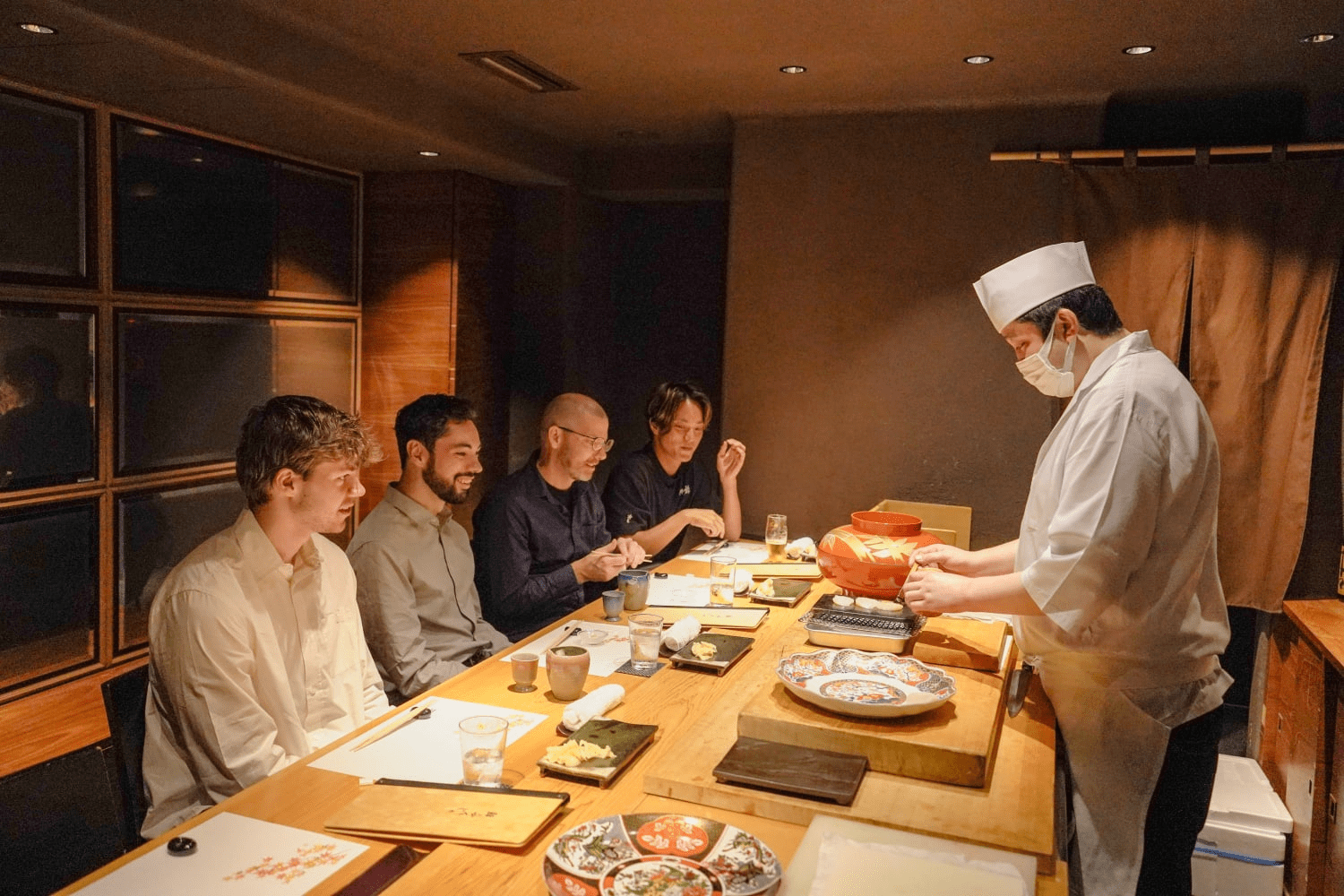
The "Finest Quality Sushi & Tempura Dining Experience in Ginza" is a tour that visits renowned establishments that have earned Michelin stars or high ratings on "Tabelog," Japan's largest restaurant reservation service. This tour allows you to enjoy first-class flavors of sushi and tempura, which represent Japanese cuisine.
The attractive point of this tour is that counter seats are guaranteed, where you can experience the artisan's techniques up close. English-speaking guides carefully explain the cultural background of sushi and tempura as well as proper eating etiquette, so even first-time visitors to high-end Japanese restaurants can enjoy with peace of mind.
Since this tour involves walking around the refined streets of Ginza, please participate wearing comfortable walking shoes.
Information:
- Meeting point: Lion Statue at Ginza Mitsukoshi near Exit A8 of Ginza Station
- Tour Area: Ginza
- Start Time: 15:30~ or 16:30~
Many Author Recommendations Too! Introducing Michelin 2025 1-Star Restaurants by Area
Tokyo's Michelin 1-star tempura restaurants inherit traditional tempura techniques while providing the highest quality tempura with their own unique personalities and advanced techniques.
From here, we'll introduce Michelin 1-star tempura restaurants scattered throughout areas like Ningyocho, Azabu, and Shibuya, organized by area.
Ningyocho
Ningyocho is an emotionally rich area where Japan's traditional atmosphere fuses with modern vitality.
Ningyocho has many traditional craft shops and long-established restaurants, with tempura shops also lined up with unique characteristics. Additionally, Ningyocho is a competitive district where three 1-star tempura restaurants are concentrated.
You can enjoy exquisite tempura where highly skilled artisans are thoroughly committed to everything from ingredient selection to cooking methods.
Tempura Yaguchi
Source:Tabelog
Tempura Yaguchi is a high-end tempura restaurant where you can taste carefully crafted tempura, including changing oil temperature and frying time for each ingredient. The owner trained under a master known as the "God of Tempura" before becoming independent and establishing his own unique style.
This restaurant's signature menu item is shrimp tempura, where the head and body are fried separately. When I first heard "shrimp tempura," I imagined only the body portion being fried, so I remember being surprised when it was first served. You can enjoy the rich umami from the head and the sweetness of the shrimp from the body.
At Tempura Yaguchi, you can dine while watching the artisan's techniques up close in an intimate space with 8 counter seats, which is another attractive point. Please experience the highest quality tempura centered on fresh seafood, including not only shrimp but also smelt and sea eel.
Information:
- Address: Tokyo, Chuo-ku, Nihonbashi-Ningyocho 2-9-7 Oedo Access 2 1F
- Business Hours: [Lunch] 11:30-13:00 [Dinner] 18:00-22:30 (Last entry 20:30)
- Closed: Irregular holidays
- Phone: 03-3527-3701
- Official Website: https://guide.michelin.com/jp/ja/tokyo-region/tokyo/restaurant/tempura-yaguchi
Nihombashi Sonoji
Source:Tabelog
Nihombashi Sonoji is a renowned restaurant where you can enjoy both tempura and soba, with the motto "finish with soba after eating tempura."
The owner, originally from Shizuoka Prefecture where Mount Fuji is located, provides exquisite tempura using carefully selected ingredients including fresh seafood caught in his hometown's seas and vegetables directly shipped from farms. The tempura made with high-quality Shizuoka ingredients, from seafood like squid and pufferfish to vegetables like green beans and carrots, is absolutely exquisite.
At Nihombashi Sonoji, you can finally taste hand-made soba personally prepared by the owner, whose family runs a soba restaurant. The soba enjoyed after tempura has a refreshing quality and is perfect as a finale to tempura.
High-quality sake pairs excellently with authentic tempura and soba. Why not enjoy the marriage of tempura and soba made with carefully selected ingredients with Shizuoka sake?
Information:
- Address: Tokyo, Chuo-ku, Nihonbashi-Ningyocho 2-22-11
- Business Hours: [Lunch] 12:00-14:00 [Dinner] 18:30-21:00
- Closed: Monday, 2nd & 3rd Sunday, New Year, summer period, other irregular holidays
- Phone: 03-5643-1566
- Official Website: http://www.sonoji.info/
Edomae Shinsaku
Source:Tabelog
Edomae Shinsaku is a renowned restaurant that has continuously earned Michelin 1-star for 7 consecutive years. Edomae Shinsaku has established unique tempura techniques that use different methods of steaming, dehydrating, and grilling for each ingredient, providing creative tempura unlike any other restaurant.
Edomae Shinsaku is characterized by frying slowly at low temperatures, which is unusual for tempura, allowing you to taste moist tempura that brings out the umami of the ingredients. Also, being able to enjoy ingredients that are somewhat unusual for tempura, such as surf clam, potatoes, and bamboo shoots, is one of my favorite points.
Please savor the exquisite tempura made with unique ingredients while watching the self-taught owner carefully fry each item one by one right before your eyes.
Information:
- Address: Tokyo, Chuo-ku, Nihonbashi-Ningyocho 2-10-11 KYOEPLAZA 6F
Business Hours: [Lunch] 12:00~ Tuesday, Thursday, Saturday only [Dinner] 19:00~
- Closed: Sunday, other temporary closures
- Phone: 03-5615-8728
- Official Website: https://www.shinsaku.tokyo/
Azabu
Azabu is a sophisticated upscale residential area that also features charming retro shopping streets with over 300 years of history, creating a neighborhood rich in atmosphere. This refined area of Tokyo is home to renowned tempura establishments that provide high-quality ingredients and sophisticated service.
Here, we introduce two restaurants in Azabu that offer exceptional tempura with distinctive characteristics, including tempura that pairs perfectly with sake from across Japan and seasonal ingredient preparations.
Tempura Maehira
Source:Pocket Concierge
Tempura Maehira adopts an authentic style in its intimate counter-only space, serving fresh tempura one piece at a time right before your eyes. You can savor exquisite tempura created by the masterful techniques of the owner, who trained at popular tempura restaurants, combined with seasonal ingredients.
At Tempura Maehira, the appealing feature is the ability to enjoy tempura made with seasonal ingredients such as wild mountain vegetables in spring and hamo (pike conger eel) in summer. While experiencing the changing seasons of Japan, you can thoroughly savor the umami of the most delicious seafood and vegetables of each period.
Additionally, the tempura at this restaurant, run by a sake-loving owner, pairs excellently with carefully selected sake from across Japan. Please be sure to experience the premium sake that complements each ingredient.
Information:
- Address: 4F ISI Building, 2-8-16 Azabu-Juban, Minato-ku, Tokyo
- Business Hours: 17:00-22:30 (Last entry 20:00)
- Closed: Sundays
- Phone: 03-6435-1996
- Official Website: https://tempura-maehira.myconciergejapan.net/
Tempura Yokota
Source: Google Map
Tempura Yokota is a one-Michelin-starred restaurant located in Azabu-juban. I first visited this restaurant on an autumn night, and I still vividly remember the taste from that time.
The characteristic of Yokota's tempura is, above all, its high freshness. The conger eel tempura I ate was surprisingly soft and had a melt-in-your-mouth texture. I felt that this is only possible with the use of fresh ingredients and the technique of frying at the perfect timing.
The omakase course allows you to feel the changing of seasons. When I visited in autumn, it was full of autumn flavors like matsutake mushrooms, ginkgo nuts, and Pacific saury. Especially, the matsutake tempura was fragrant and made me feel the arrival of autumn.
The budget is ¥8,000 to ¥9,999 for lunch and ¥15,000 to ¥19,999 for dinner. I think it's a relatively reasonable price setting among high-end restaurants. The quality of tempura you can taste at this price is very high, and I feel the cost-performance is good.
<Store Information>
Address: Patio Azabujuban II, 3F, 3-11-3 Motoazabu, Minato City, Tokyo 106-0046
Closed: Sundays
Phone: 0369105253
Hours: 4 PM–12 AM
Website: https://yokota-g.com/#top
Tsukiji Area
Tsukiji is home to the Tsukiji Outer Market, one of Tokyo's premier gourmet areas where fresh seafood and agricultural products gather. The Tsukiji area hosts tempura restaurants that provide high-quality tempura utilizing fresh ingredients sourced from the Tsukiji Outer Market.
Here, we introduce two Michelin one-star establishments in Tsukiji: one where you can enjoy tempura in a dignified space incorporating traditional Japanese architecture, and another where you can experience unique tempura made with ingredients from the owner's hometown.
Seiju
Source:Tabelog
Seiju is a high-end tempura specialty restaurant located about a 5-minute walk from the Tsukiji Outer Market. In a quiet space reminiscent of a traditional Japanese tea room, you can savor exquisite tempura made with fresh seafood purchased every morning at the Tsukiji Outer Market.
Seiju is characterized by careful cooking that adjusts the heat according to each ingredient. What I particularly cannot forget are the two types of shrimp tempura prepared with different frying techniques. The two varieties - one slowly fried to concentrate the umami and another that maintains a rare center to enjoy the freshness - are masterpieces created by the artisan's skilled techniques.
At Seiju, in addition to beer and sake, there is a rich variety of wines, including French wines. Please be sure to taste the exquisitely fried tempura together with premium wines.
Information:
- Address: B1F Urban Mates Building, 3-16-9 Tsukiji, Chuo-ku, Tokyo
- Business Hours: 17:00-21:00 (L.O. 21:00)
- Closed: Mondays, plus irregular holidays
- Phone: 03-3546-2622
- Official Website: https://seijyu.jp/
Shunkeian Arakaki
Source:Tabelog
Shunkeian Arakaki is a tempura specialty restaurant where you can enjoy distinctive tempura created by an owner from Okinawa. This restaurant operates under the concept of "a small restaurant where you can taste seasonal blessings," providing tempura using seasonal ingredients and authentic Japanese cuisine.
At Shunkeian Arakaki, the characteristic feature is the ability to enjoy unique tempura using Okinawan ingredients such as loofah, green papaya, and traditional Okinawan carrots. Depending on the season, you can also experience unusual tempura varieties such as dragon fruit, which are rare for tempura.
Another attractive feature of this restaurant is the use of Okinawan traditional crafts as tableware, including Ryukyu lacquerware and Yachimun (traditional Okinawan pottery). This restaurant is also recommended for those who want to experience unique tempura that fuses traditional artisan techniques with Okinawan ingredients.
Information:
- Address: 1F-B Vort Shintomicho, 3-5-10 Minato, Chuo-ku, Tokyo
- Business Hours: [Lunch] 12:00-15:00 [Dinner] 18:00-
- Closed: Mondays, Sundays Plus occasional temporary closures
- Phone: 090-7716-4125
- Official Website: https://shunkeianarakaki-japan.com/
Shibuya Area (Naka-meguro and Hiroo)
The Shibuya area includes many sophisticated neighborhoods such as Naka-meguro, a trendy district that sets the latest trends, and Hiroo, an upscale residential area with a calm and elegant atmosphere. Access from Shibuya is convenient, taking about 4 minutes by train to Naka-meguro and about 10 minutes to Hiroo.
These areas of Naka-meguro and Hiroo are home to renowned establishments offering creative tempura, including tempura that utilizes seasonal ingredients, tempura enjoyed alongside Japanese cuisine, and unique varieties. Among these, we introduce three Michelin one-star restaurants, so please be sure to check them out.
Tempura Miyashiro (Around Naka-meguro)
Source: Google Map
Tempura Miyashiro is a one-Michelin-starred restaurant located in Meguro.
The characteristic of Miyashiro-san's tempura lies in its delicate flavors using seasonal ingredients. The bamboo shoot tempura I ate in spring beautifully brought out the natural sweetness and aroma of the bamboo shoot, making me feel the arrival of spring. The batter was surprisingly thin, and I felt it maximized the flavor of the ingredients.
The interior has a calm Japanese atmosphere, like a hidden retreat. From the counter seats, you can observe the delicate techniques up close. I always find myself captivated by their careful work.
The service is also very attentive, allowing for a comfortable time. When I visited, there were detailed explanations for each tempura, allowing me to enjoy the dishes more deeply.
The budget is ¥8,000 to ¥9,999 for lunch and ¥15,000 to ¥19,999 for dinner. I think it's a relatively reasonable price setting among high-end restaurants. The quality of tempura you can taste at this price is very high, and I feel the cost-performance is good.
<Store Information>
Address: 2 Chome-18-11 Kamimeguro, Meguro City, Tokyo 153-0051
Closed: Mondays
Phone: 0364522808
Hours: 12–2 PM, 5:30–11 PM
Website: https://www.miyashiro.tokyo/
TEN-MASA (Around Naka-meguro)
Source:Tabelog
TEN-MASA is a tempura and Japanese cuisine specialty restaurant located about a 4-minute walk from Naka-meguro Station. This establishment is a renowned restaurant that achieved Michelin one-star status within one year of its 2012 opening and has maintained this position for 11 consecutive years since.
TEN-MASA's greatest characteristic is the "Ten-Masa Kaiseki," a course meal that fuses tempura and Japanese cuisine. The first half of the course features traditional Japanese cuisine staples including appetizers, soup, and sashimi, while the latter half provides tempura carefully fried one piece at a time while maximizing the flavor of each ingredient.
Among these, my personal favorite is the tempura of sea urchin wrapped in seaweed and fried. The sweetness of the sea urchin and the fragrant flavor of the seaweed create an exquisite harmony. TEN-MASA offers three different courses, and the ability to choose according to your preferences is another attractive feature.
Information:
- Address: B1F Cube M, 3-16-13 Kami-meguro, Meguro-ku, Tokyo
- Business Hours: 18:00-22:00 (L.O. 20:00)
- Closed: Mondays
- Phone: 03-6303-4005
- Official Website: https://www.instagram.com/tenmasa_nakameguro/?utm_medium=copy_link
Tentempura Uchitsu (Around Hiroo)
Source:Tabelog
Tentempura Uchitsu is a tempura specialty restaurant located a 5-minute walk from Hiroo Station. At this restaurant, you can savor high-quality tempura while viewing seasonal garden scenery across the counter.
This restaurant is characterized by its ability to enjoy unique varieties such as crab legs fried with shells and tempura using whole "amago" (a type of freshwater fish). This reflects the owner's dedication to continuously searching for new ingredients suitable for tempura, as traditional tempura ingredients have become less available.
At this establishment, tempura is enjoyed with two types of seasonings: seaweed salt from Kyushu and homemade salt with kelp dashi. Please enjoy the exquisite tempura while changing the type of salt according to each ingredient.
Information:
- Address: 1F Takara Building, 5-25-4 Hiroo, Shibuya-ku, Tokyo
- Business Hours: 18:00-23:00
- Closed: Sundays
- Phone: 03-6408-9591
- Official Website: https://www.tempura-uchitsu.com/
Ginza
Ginza is Japan's representative bustling district, where world-class luxury brand stores line up alongside historic streetscapes that visitors can enjoy.
In Ginza, high-level establishments are densely packed together, including the previously mentioned Tempura Kondo, long-established Japanese restaurants, and upscale dining establishments.
We will introduce famous Ginza restaurants where you can taste high-quality tempura that has earned Michelin one star recognition, so please use this as a reference.
Tempura Fukamachi
Source: Google Map
Tempura Fukamachi is a one-Michelin-starred restaurant located in Kyobashi.
The omakase course allows you to feel the changing of seasons. When I visited in winter, it was full of winter delicacies like oysters, shirako (milt), and crab. Especially, the oyster tempura was prepared in a way that maintained the rich flavor of the oyster while making it light and crispy, achieving an exquisite balance.
The interior has a high-class Japanese modern decor with a calm atmosphere. At the counter seats, you can observe the chef's delicate techniques up close, which is like an entertainment in itself.
The characteristic of Fukamachi-san's tempura lies in his careful cooking method. The cooking process I saw right in front of me was truly a display of craftsmanship. I was deeply impressed by Fukamachi-san's sincere attitude towards each piece of tempura.
The budget is ¥10,000 to ¥14,999 for lunch and ¥15,000 to ¥19,999 for dinner. While it's a high-end restaurant, I feel that being able to enjoy special seasonal menus is a unique attraction in this price range.
<Store Information>
Address: A・M Kyobashi Bld., 101, 2-5-2 Kyobashi, Chuo City, Tokyo 104-0031
Closed: Mondays
Phone: 0352508777
Hours (Sundays): 12–2 PM, 5–10 PM
Hours: 12–2 PM, 5–7 PM, 7:30–10 PM
Website: https://autoreserve.com/ja/restaurants/JBTLB5hhiNWrgExwhgsy
Popular with locals too! 3 recommended tempura restaurants worth visiting
Tempura Onodera (Ginza)
Source: Google Map
Tempura Ginza Onodera is a one-Michelin-starred restaurant in Ginza.
Onodera's dedication starts from ingredient selection. The summer vegetable tempura I ate had surprisingly intense flavors for each vegetable, and I really felt the high quality of the ingredients.
The tempura made with seasonal seafood is also exquisite. I felt that their technique truly brings out the best in each ingredient.
The course composition is also wonderful, progressing from lighter flavors to gradually more intense ones. The meal that ends with kakiage (mixed tempura) was perfect as a finale. I'm always moved by this flow every time I visit.
The budget is ¥8,800 to ¥24,200 for lunch and ¥20,000 and up for dinner. While it's a high-end restaurant, I think it's well worth the price.
Reservations are essential, and I recommend making them about a month in advance, especially for weekends. As it's a popular restaurant, it's often difficult to get a reservation at the last minute.
<Store Information>
Address: Kanenari Bld., 6F, 8-5-10 Ginza, Chuo City, Tokyo 104-0061
Closed: None
Phone: 05031879470
Hours: 11 AM–1 PM, 6–7:30 PM
Website: https://onodera-group.com/tempura-ginza/
Tempura Kakiage Yukimura (Bib Gourmand listed restaurant)
Source:Tabelog
Tempura Kakiage Yukimura is a kakiage bowl specialty restaurant located in Shimbashi, one of Japan's premier business districts. Kakiage is a type of tempura made by coating small pieces of seafood and vegetables in flour and frying them together. At this restaurant, you can enjoy exquisite kakiage bowls featuring kakiage served over rice with sauce.
My recommended highlight of Tempura Kakiage Yukimura's kakiage bowl is that it's packed with bouncy-textured shrimp. The kakiage contains squid in addition to shrimp, and with each bite, the umami of the seafood spreads throughout your mouth.
This restaurant operates under the policy of "first-class skills, third-class prices," allowing you to enjoy exquisite cuisine at reasonable prices, which is also a reason for its popularity. Since large portions of rice are free of charge, it's also recommended for those who want to casually enjoy hearty and delicious seafood bowls.
Information:
- Address: 1F, 6-13-13 Shimbashi, Minato-ku, Tokyo
- Business Hours: [Lunch] 11:00-14:00 [Dinner] 17:00-21:00
- Closed: Sundays, holidays Saturdays lunch only
- Phone: 03-6721-5343
- Official Website: https://www.instagram.com/tempura_yukimura/#
Tensuke (Bib Gourmand listed restaurant)
Source:Tabelog
Tensuke is a tempura specialty restaurant located about a 2-minute walk from Koenji Station. At this restaurant, you can affordably enjoy tempura made with seafood like shrimp and squid, as well as vegetables like pumpkin and eggplant.
Tensuke's specialty is "Age Tamagodon," where a raw egg tempura (an egg fried whole in oil) is served over rice. The "Age Tamagodon" features a hot, soft-boiled egg with sweet and savory sauce that soaks into the rice, creating a hearty dish that you'll finish in no time.
At Tensuke, you can also enjoy unique performances, such as the owner throwing eggshells backward after using the eggs in cooking, which is part of the restaurant's popularity. With its friendly atmosphere that's popular with foreign tourists, it's also recommended for those who want to casually enjoy the taste of a Bib Gourmand listed establishment.
Information:
- Address: 1F Plaza Koenji, 3-22-7 Koenji-kita, Suginami-ku, Tokyo
- Business Hours: [Weekdays] 12:00-14:00 [Weekends] 12:00-15:00
- Closed: Mondays
- Phone: 03-3223-8505
- Official Website: https://guide.michelin.com/jp/ja/tokyo-region/tokyo/restaurant/tensuke
Frequently Asked Questions
Tempura is one of Japan's representative dishes, but when it comes to dining at high-end restaurants, various questions and concerns may arise. Here, I'll introduce questions and answers that I've actually experienced and heard from many of my foreign friends.
Can I Visit with Children?
Visiting high-end tempura restaurants with children varies depending on the establishment. From my experience, some places welcome children without any issues, while others may refuse.
For example, when I once visited with my 5-year-old nephew, one restaurant warmly welcomed us and even prepared a small chair for the child. On the other hand, another restaurant politely refused us, citing the reason of "maintaining a quiet environment."
The important thing is to check with the restaurant you're considering visiting in advance. When making a reservation, inform them that you'll be bringing children and confirm if it's acceptable. Also, consider the age of the children and whether they can eat quietly.
My personal advice would be to choose a restaurant with a relatively relaxed atmosphere. Also, lunchtime tends to be more accepting of children.
Are There Any Tips for Enjoying Tempura?
There are several tips for maximizing your enjoyment of tempura. I'll share what I've learned through my many tempura-eating experiences.
First and most importantly, "eat it freshly fried." At high-end tempura restaurants, the chef will serve freshly fried tempura right in front of you. By eating this quickly, you can enjoy the crispy texture and hot flavor. I particularly think that shrimp tempura doesn't reveal its true deliciousness unless it's freshly fried.
Next is how to use condiments. Generally, tempura is eaten with salt or tempura sauce, but by changing this, you can enjoy different flavors of the same tempura. For example, I always eat the first bite with salt and the second bite with tempura sauce. This allows me to enjoy both the original flavor of the ingredient and the flavor harmonized with the condiment.
Also, many high-end restaurants prepare special salts or condiments paired with each tempura. For instance, at one restaurant I visited, various flavored salts like yuzu salt and matcha salt were prepared. Using these can allow you to enjoy deeper flavors.
Is There a Dress Code for Tempura Restaurants?
At high-end tempura restaurants, smart casual attire is recommended. For men, a collared shirt and slacks, and for women, a dress or blouse with a skirt would be appropriate. I often wear a jacket when visiting high-end restaurants.
However, overly formal attire (like a tuxedo or evening gown) might give an out-of-place impression. I remember when a friend of mine once visited in a suit and tie, it felt a bit out of place.
Attire to avoid includes T-shirts, shorts, and sandals. It's also recommended to go easy on strong perfumes or aftershave lotions. Strong scents might interfere with enjoying the delicate aroma of tempura.
The important thing is to directly confirm with the restaurant when making a reservation. I always make sure to ask about "appropriate attire" when booking. Many restaurants will explain politely, and some will even tell you specific dress codes.

